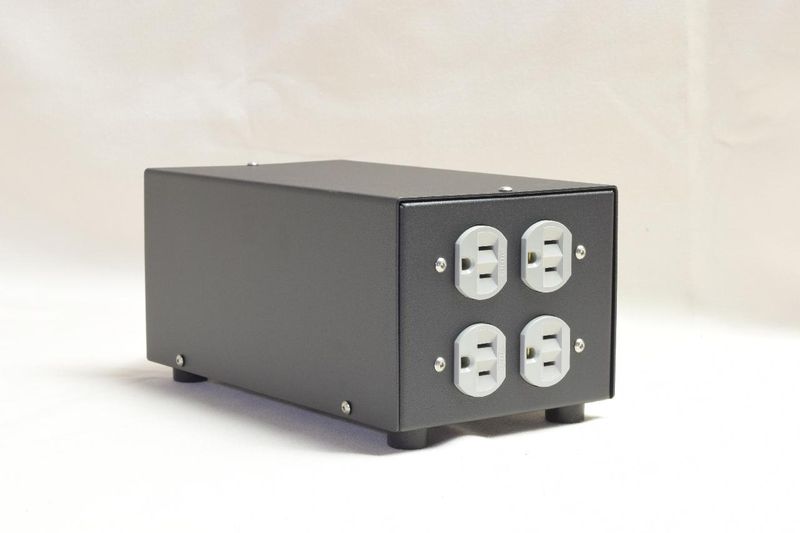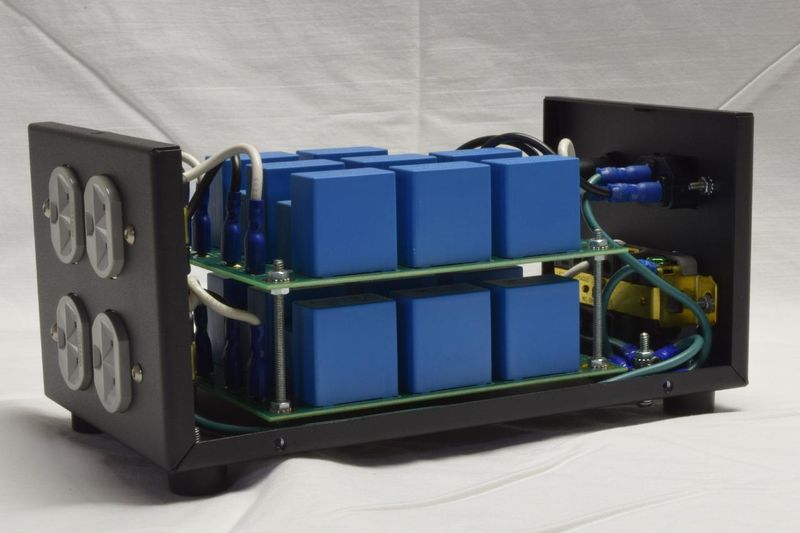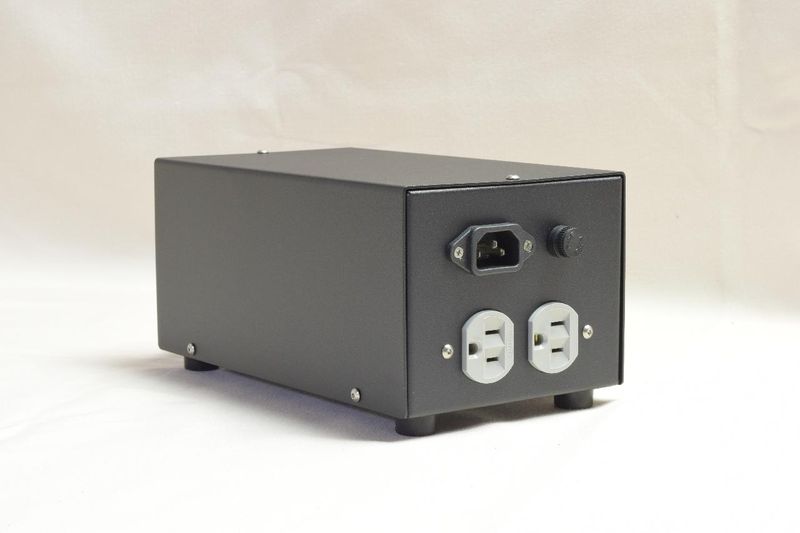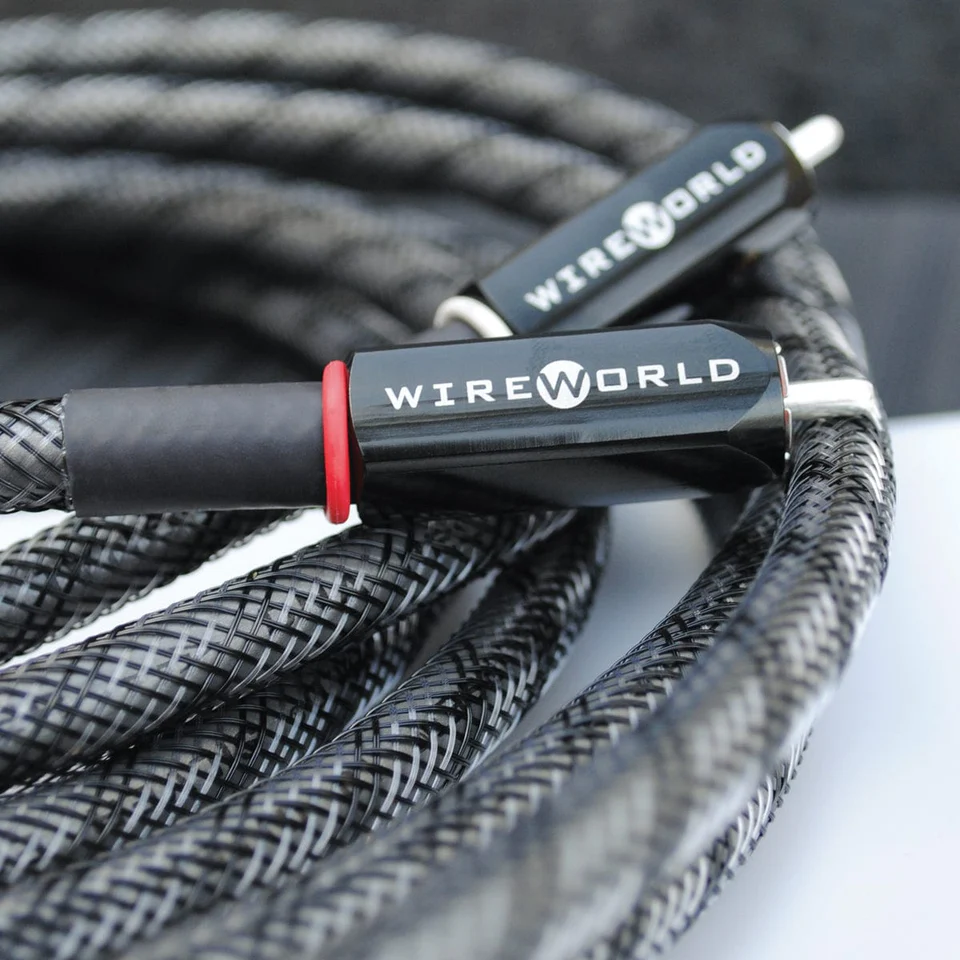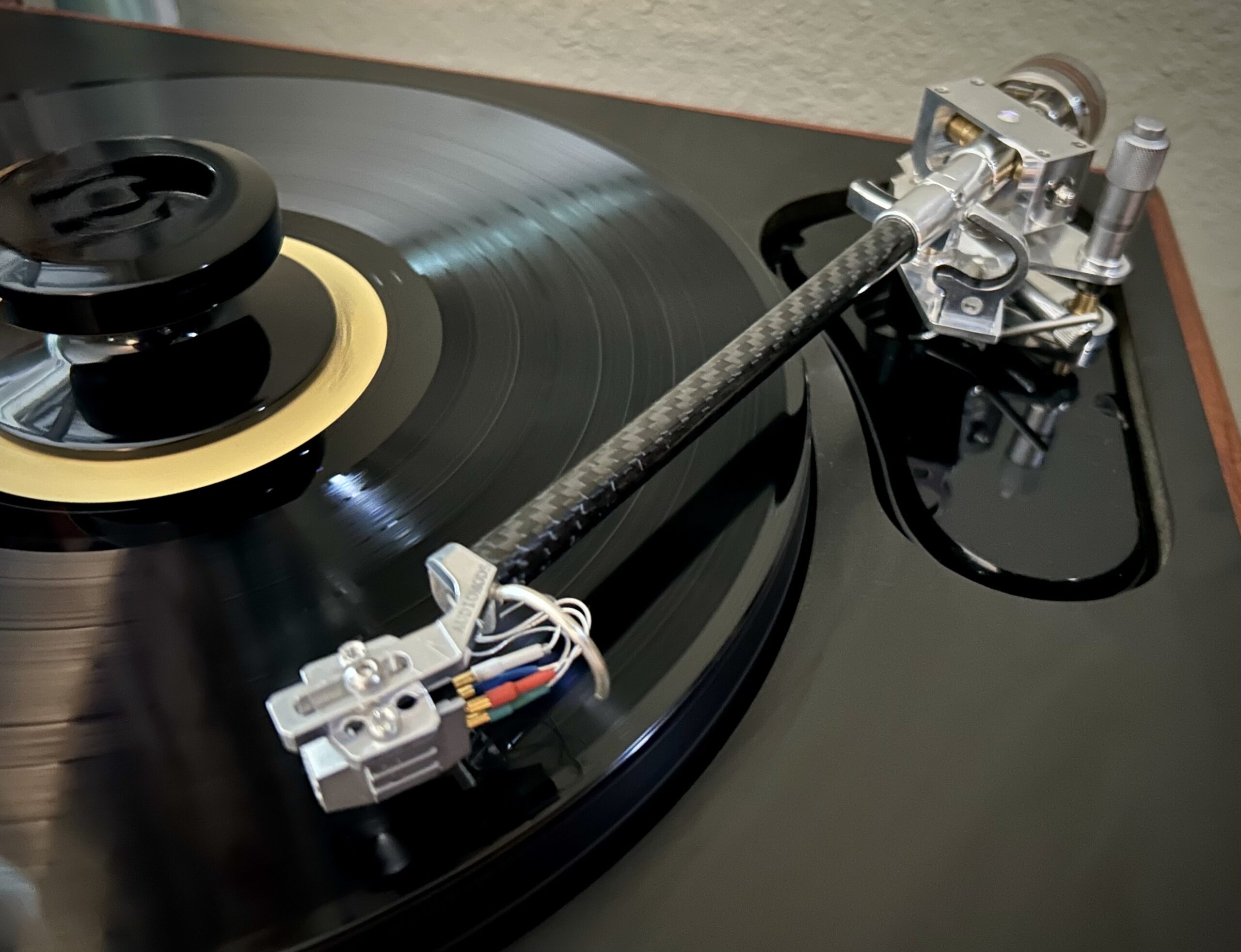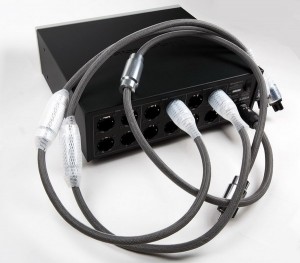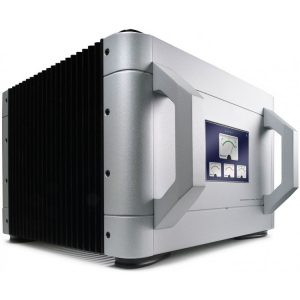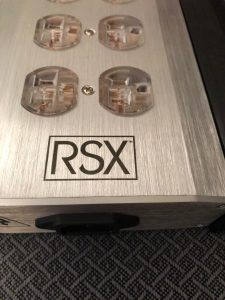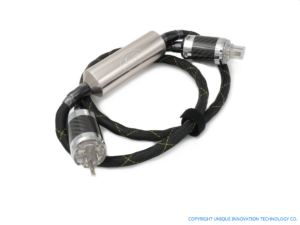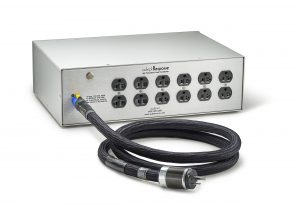High performance audio components have a variety of needs to reach their full potential, and one of the most critical requirements is being fed the cleanest AC current as possible. A typical audio system can sound quite respectable with a direct feed of AC current from the wall, however hobbyists that are striving to cross the threshold from good sound to exceptional music reproduction understand that there are varying qualities of AC that are available to us. When pursuing excellence in any endeavor, paying attention to every detail of a process is critical, and this also holds true for audio systems. The AC that is fed from our public utilities is compromised in a myriad of ways. RF and EMI interference are perhaps the most widely recognized issue that plagues incoming AC feed to our homes. There are other equally important issues such as the remote monitoring signals that now piggyback on the AC wave, and the negative effects of switching power supplies from other electronic devices that are tied into the household electrical circuit. Power conditioning components have become commonplace in many audiophile's stereo systems, yet the designs, the overall effectiveness, and associated costs can vary quite widely. Previously I have spent time with power conditioners that used isolation transformers, noise cancellation modules, rare earth materials that are reported to have filtering abilities, and AC regeneration designs. These various conditioners have run the gauntlet of modestly priced to frighteningly expensive. Given the capabilities of my current system I have been searching for a power conditioner that improves the incoming power feed without any negative side effects. While I must be mindful of the monies spent, I certainly will not accept a second-rate component that limits the system. In my search I came across a remarkable power conditioner from TLP Audio, which has been designed by Gilbert Yeung.
Some hobbyists may recognize Gilbert as the founder of Blue Circle Audio, and indeed Walt Stagner of TLP Audio and Gilbert have had an ongoing association for many years. Power conditioning has been an area where Gilbert has spent considerable time and effort in refining his designs, and the audio community holds his products in high regards. With the current lineup of TLP power conditioners that Gilbert has been commissioned to design, the underlying architecture of his circuit have seen a notable series of refinements. The underpinnings of the TLP130 conditioner is based on groupings of capacitors that form a discrete filter. A combination of complimentary filters is carefully selected and has overlapping fields that extend into the gigahertz range. Furthermore, this design does not limit current flow, so the TLP130 can effectively handle powerful amplifiers as well as source components. The array of capacitors effectively filters out any powerline noise above 60 Hz, and the removal of this contamination results in noticeable improvements in clarity, focus, and tonal purity in an audio system.
Value for the dollar spent is an underused phrase in this hobby, and it seems that there are fewer and fewer products that offer the regular Jane or Joe a solid return on their audio investment. Both Gilbert and Walt come from a time when hobbyists had choices of quality audio components that did not cost as much as a good used car, or the equivalent of your family vacation. The TLP Audio TF130 power conditioner is envisioned to be a high-performance product, yet smart choices in materials and finish were made so that hobbyists at any level could have this component within their financial reach. The TF130 is designed with an unassuming but sturdy metal chassis that is large enough to fit the capacitor boards and outlets, but with a compact footprint so it can be easily placed in tight locations. Most hobbyists choose to locate power conditioners behind audio racks if possible, and this frees Walt to use an understated finish for the TF130, and forgo any heavy faceplates, costly engraving, or even LED lights. For none of those trimmings brings any practical benefit to the end user. Even the location of the plugs on each end of the chassis are chosen to facilitate fitting the TF130 in compact spaces, and furthermore it allows for the shortest run of wire possible within the conditioner. This direct pathway from the capacitor filtration boards to the outlets is another contributing factor to the remarkable performance of this power conditioner. The MSRP of the TLP Audio TF130 conditioner is slated to be $999, however at this time there is a factory direct order option and a person can obtain one for $899 including shipping.
The TLP Audio TF130 went directly behind my Salamander Audio Geneva cabinet, and I used a small wooden stand to keep it off my carpet and give it a firm footing. I can report that having the plugs on each end of the TF130 chassis made for easy routing of power cables, especially when using the large diameter PI Audio cords I prefer. I plugged the AVM Audio Essential Mono amps into the TF130, along with a Halcro DM8 pre-amp. The AVM amps are 200 WPC monoblocs, and if there were issues with current limiting, I would know it. I used the remaining outlets for an Esoteric E-03 phono stage, and an Audio Magic Kukama DAC. I also have several small power supplies for associated audio components that I need to connect to the conditioner, so on the final plug I installed a Furman PST-8 outlet strip sin order to hook up the power for a SOTA Cosmos Eclipse turntable, a Singxer SU1 SPDIF/USB interface, and a Mac Mini computer server. Speakers are the JBL 4365 monitors, and they are complimented by a pair of Velodyne HS12 subwoofers. WireWorld Eclipse 8 speaker wire and VH Audio Spectrum CU interconnects make all the component connections. The TF130 then underwent a 100-hour break in period before I began any serious listening sessions.
A run of the mill power conditioner will often bring positive contributions to a system, however there are often other less desirable effects that occur. One of the first power conditioners I ever auditioned used a large isolation transformer, and while system noise was lowered, it came at the cost of diminished dynamic peaks in the music. I have encountered this phenomenon several times with various conditioners, so it is an attribute I listen for whenever I install a new one in my system. I am pleased to say that the TF130 has no audible limitations in this area, and I experience massive dynamic swings when the music calls for this, and yet the delicate presentation of micro-dynamic contrasts are unharmed and retain the subtle shadings within the music. On "Skateaway" by Dire Straits [Making Movies; Warner Bros BSK3480] I found the snap of the kick drum to be startlingly realistic, yet the high hat cymbal is sharp and precise with the proper decay, while the Hammond organ was smooth and vibrant with its languid pace and phrasing. The layers of dynamic expression in the opening of this song is authentic and honest in its feel and texture. The first hurdle the TF130 conditioner needs to clear is “cause no harm” to the dynamic architecture of music, and it clearly passes this test.
Causing no harm to the music is all fine and good, however if you are going to spend money on a component a person is going to want to experience an improvement in sound quality. Electrical noise on the AC line is an insidious gremlin, and rarely does a hobbyist listen and immediately identify it. When an effective power conditioner is introduced to a system a person will notice the improvements since instruments and performers have increased focus, along with a higher degree of resolution due to a lowered noise floor. Instruments will have a natural tone because an artificial high frequency sheen is stripped from the music. "This Train Revised" by the Indigo Girls [Swamp Ophelia, Epic ET5721] will sound bright, etched, and compressed when played on an audio system that is tethered to compromised AC power. My home is in the beautiful Pacific Northwest, and most of our power is provided by the large dams on the Columbia river, and honestly its quite good straight from the wall socket. Even so, the TLP Audio conditioner can remove layers of noise from the AC, and on this song the absence of electrical artifacts peels away any etching and accompanying glare. Having purified AC current results in instruments that are tonally bold and vibrant. This track employs a large band, and each instrument is distinct in its location within the soundstage, with the two vocalists located precisely in front of the backdrop of instruments. The result is a greater degree of focus and clarity to all the music I have listened to with the TF130 installed in my system.
One of my favorite albums is Blues Walk by Lou Donaldson [Blues Walk; EMI AP81-593] which I have on those superb 45 RPM Blue Note reissues. While the TLP Audio power conditioner offers a noticeable technical improvement to the system, I wanted to hear if this component would keep the emotional structure of the music intact. This album from Donaldson is a fantastic piece of jazz, and the interplay between these phenomenal musicians is the essence of this album. I experienced seductive tone from the saxophone that is located front and center on the title track. Donaldson's phrasing is smooth and has a wonderful tempo yet retains a light undercurrent of swing that makes his playing so engaging to spend an evening with. The interplay between the drummer and a second percussionist is lightning quick, with impeccable timing, and the TLP conditioner trains a spotlight on this magnificent passage. Finally, the acoustic bass has an organic texture, and it extends to a realistic depth without being constrained or overblown in any way. After several exhaustive listening sessions, my determination is that the TF130 conditioner maintains the emotional content of the music, and in some ways enhances it because it deftly strips any unwanted artifacts that are caused by AC powerline noise.
What are the limitations of the TLP Audio TF130 power conditioner? From the standpoint of sonic affects, well, I would say nothing of consequence. The TF130 is going to take up permanent residence in my system, as I find that it brings a wide array of improvements to the musical presentation in my home. However, when looking over its capabilities, I was unable to find any specifications for surge protection. So, I did reach out to Walt Stagner to gather a bit more information. This conditioner has a fuse on the AC input side, and if surge protection is needed it can be added to the system with an additional product such as the Yalo Bulala that Gilbert Yeung has designed. While I would prefer to see the surge protection be an onboard feature, I will admit that the Yalo Bulala is a very affordable option. Furthermore, since the TF130 can match the performance of other conditioners that cost a few thousand dollars, it is difficult to grouse about having to use a stand-alone surge protector.
Have you ever referred to yourself as an audiophile with champagne taste and a beer budget? Today is the day you can hold your head high and add a high-performance power conditioner to your system for a sane amount of money. Walt Stagner and Gilbert Yeung have conspired to offer the TF130 conditioner which effectively scrubs AC current clean from multiple sources of noise that ride on our powerlines. Not content with designing an excellent component, these gentlemen have made prudent and thoughtful decisions regarding materials and component configuration that allow this conditioner to be sold for under $900. The array of filters built from capacitors bundles have been carefully arranged to provide efficient filtering at all levels within the audible bandwidth of an audio system. This iteration of Gilbert's filter system is remarkably effective, to the point where I felt comfortable replacing a $5000 power conditioner with it. The compact size and arrangement of outlet plugs allows me to fit it easily behind my audio rack, and I am not paying for an expensive cabinet that is a shiny bauble. Let us not forget that fancy trimmings cost you money in the end, with little or no benefit to the sonic performance of your audio system. At the end of the day the TLP Audio conditioner performs as advertised, in that it lowers the noise floor of an audio system which results in improved low-level detail, tonal purity, and tightly focused imaging. I would recommend you search one of these hidden gems out and give it a listen, as I think your audio system and pocketbook will thank you.
TF130
Retail: $999
TLP Audio




